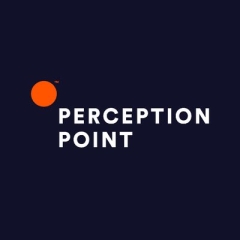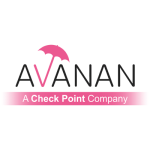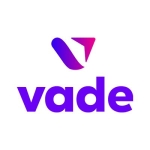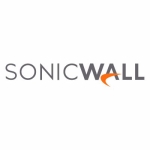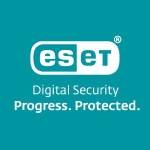What is our primary use case?
We use them for email security of all our clients. We only use their email protection right now. We don't use their protection for Teams or other services. We use it strictly for email.
How has it helped my organization?
We get emails every time one of our customers gets a blocked email. This is something that I like to see. I probably get hundreds of emails that go to the folder for blocked emails. I see it blocking a lot of phishing emails that look like Amazon or Microsoft Office 365 logins. With common websites, people don't even think if they see a fake email. I see a lot of them getting blocked.
Overall, I am very happy with it. We use it for ourselves and all our clients. It is rare to see something slip through. It definitely happens that there will be an email that comes through that is dangerous or junk, because no solution is 100%. For their effectiveness, I would rate them as nine or 10 out of 10.
I had a customer who was decent-sized, about $15 million a year, as we work with small businesses. This guy had no email security. I kept telling him, "Hey, I need you to buy this email security. Your employees are clicking on bad links." The guy refused to buy the software. It was only a couple hundred bucks a month, which is not much for a company of their size. Then, his accounting person got a lot of emails and clicked on one. They got hacked. The hackers got into their bank account and took about $70,000. This is an example of people who don't have email security.
Knock on wood. We haven't had a client, who uses their protection, have an email security breach. That is the best thing about what they do. We don't have to think too much. Their product just works and keeps bad emails away.
There is now real recognition from our customers about email security. A lot of people now know how dangerous email can be. Perception Point does a good job of keeping danger away.
What is most valuable?
The way that they scan all embedded links in an email. One of their features is a scan engine. It scans every link, then tries to determine if it is an active site. So, if they saw a threat and the website was down, then it is not really a threat. If there is a link in an email, they still pass the email through because they can't determine that it is a problem. However, when they scan them and see a problem, then we can see these results in the portal, which is good as well.
If we have clients who say, "Hey, I didn't get this email," or "Look at this," we can view a lot of this information in the portal.
With Office 365, the nice thing is that if an email does slip through, we have the feature enabled where we can notify them or log into the portal, then it will take the email out of our customer's mailboxes.
What needs improvement?
Their marketing and training need improvement. When some of their new features come out, they don't do a great job of notifying or educating us, e.g., sending emails such as, "Hey we..."
Just to create a new customer, we used to have to go through their support team. The last time that I had a new customer, they said, "By the way, we have a new feature. You can do it yourself," and that was fine.
They just don't do a good job of promoting themselves. They seem like a typical busy IT company who is just working on fixing problems and making technology better. However, they are not fantastic at marketing themselves to existing partners, which is not a bad thing. It is just something for improvement.
For how long have I used the solution?
I have been using it for two to three years. We might have been one of the first IT companies to become a partner with them.
What do I think about the stability of the solution?
It has been very available and stable. The only time that we have had an issue in the last couple years (because they are based off Amazon's platform) was about a month ago when Amazon had that huge outage in Virginia. That was a problem.
The problem was that Amazon went down and our customers could not get their emails. However, the good news was that all the emails were saved at Amazon and Perception Point. There was a workaround. We could have removed Perception Point from our customers, but that would have removed the email security. So, when our customers called us and freaked out, saying, "I don't have it." We told them there was an Amazon outage. I said, "Listen, you can either wait until this gets fixed or we can remove the email security." All our customers said, "No, I'll wait," because they don't want their employees to get email viruses and click on them.
What do I think about the scalability of the solution?
Our largest customer is not very large compared to an enterprise. The solution is fine for us based on our client base.
How are customer service and support?
Their support has been fantastic. We get very quick responses. With another vendor, I had to wait a week sometimes for an answer, which was crazy.
I have had a couple customers get mail bombed, getting 10,000 emails a day. It is impossible for somebody to check their email when they are getting that many. I had to reach out to Perception Point support.
I have the cell phone of one of the top guys on the technical side. If I can't get a hold of somebody on their main number, then I can text or call him. I have had to a couple times. He gets somebody on his team to help slow down these mail bombs. I don't know if that is part of their Incident Response Team, but they have definitely done a good job when we have had some email emergencies.
Sometimes, their support is not 100% perfect. I would rate it as 9 or 10 out of 10.
How would you rate customer service and support?
Which solution did I use previously and why did I switch?
We use Proofpoint and still have them as a vendor for people who have onsite email servers.
We were trying to use both Proofpoint and Perception Point for a customer, and it didn't work. That was because of Proofpoint. So, we were stuck only with Proofpoint.
I don't like Proofpoint. Their support has gotten better for some reason. I am not sure what has changed, but they had a period where their support was really bad and it was hard to get in contact with somebody. That has changed. It has gotten a little better, but I have had some problems recently. This was one of the reasons why I didn't want to use Proofpoint. They are a little too big and haven't given us good service as an IT company.
IRONSCALES is a big player and we tried using them. We went through demos and talked to sales engineers. I didn't see it stopping a lot of bad things, but I don't know if we had it configured correctly. We could never get it to work right. When we had issues, e.g., we had some emails that were blocked and some other problems, it took them weeks to get back to us. That is just unacceptable when you are dealing with email products.
I just didn't have good experiences with Proofpoint and IRONSCALES.
How was the initial setup?
The initial deployment is easy. They have a document that shows you how to do it. Once you do it a couple times, you can repeat it easily. I have done it quite a few times. I can probably set somebody up on Office 365 in 15 minutes or less.
After deployment, the solution starts delivering value immediately, when it comes to stopping threats. As soon as you put them in place, they are scanning emails for anything bad coming through, which is a nice thing.
What was our ROI?
People don't realize the benefit of it. When we get a new customer, we include this solution in our pricing. They don't even realize that we put it in. The first thing that our customers don't realize is they are not getting a lot of viruses or bad emails. The second is that they are staying up all the time. For example, with this other previous customer who didn't have it, they had somebody clicking a bad email almost every day. They were at risk of getting an infection, and then they had problems. We would then have to go clean it up. Their employees couldn't work because we were working on the computer where they clicked the bad email.
For people who don't have it, they will see the benefit when they do have it. It won't interrupt your business because everything runs smoothly. You never see the bad stuff.
It prevents downtime. A lot of our customers don't like it when their employees are not working because they are paying them to do nothing. If I have to work on somebody's computer for two hours, that is two hours when somebody is getting paid to do nothing. That is the thing that this type of solution helps with. It is really a waste of my time. Because if they had this solution, I wouldn't have to spend two hours cleaning it up.
What's my experience with pricing, setup cost, and licensing?
There is room for improvement for them with an MSP partner. The pricing is good and fair. Our customers don't complain. The only thing is that it's a little bit old school. They don't have a system that automatically checks the number of users that our customers have so we can just update the licenses ourselves through a website. It is still done manually. They have a person who checks invoicing monthly to determine if there have been any changes. A nice improvement would be if they could get automated licensing counts.
Which other solutions did I evaluate?
I have gone through a couple different vendors and didn't like the other products. Then, I found Perception Point. I used to know a guy who worked for them. We looked at their product, which did what we needed to do. Also, support was important for us. With some of the larger companies, I have had problems getting issues fixed that needed to be fixed in a timely manner. So, we decided to go with Perception Point, their technology, and portal, which shows us how it scans information in emails.
What other advice do I have?
It keeps the bad emails out. They do the job of email security. We have been pretty lucky.
Do a demo with Perception Point and other vendors to see what you like. Everybody likes things for different reasons. One of the biggest selling points for us is the quick access to support via email and phone. That was my number one or two reason for going with them. You want a good product that protects you, and there are a lot of good products out there now, but the support is really why we went with them. If you want good support when there is a problem, think about these guys, because we didn't have good luck with some bigger companies.
I would rate this solution as 9 or 10 out of 10. We are super happy.
Disclosure: PeerSpot contacted the reviewer to collect the review and to validate authenticity. The reviewer was referred by the vendor, but the review is not subject to editing or approval by the vendor. The reviewer's company has a business relationship with this vendor other than being a customer: Partner

